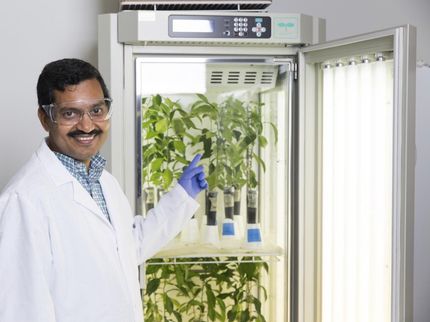From good to bad with a copper switch
At the molecular level, the difference between Doctor Jekyll and Mr Hyde lies in a metal, copper. In its physiological form, the prion protein (PrPC ) is 'good' and is involved in normal body processes. It can happen, however, that because of some as yet unknown mechanism, it changes form and turns into a threat for the health of humans and animals (it is responsible for neurodegenerative diseases such as spongiform encephalopathies). According to a new SISSA study, the mechanism underlying this change is a metal, copper, or rather a particular region of the protein to which the metal binds, which acts as a sort of 'switch' that turns PrPC into its terrible alter ego.

This is a photograph showing how PrPC turns into a Prion.
SISSA
"We still don't know what complex molecular mechanisms cause the prion protein to become bad," explains Giuseppe Legname, professor at the International School for Advanced Studies (SISSA) in Trieste who coordinated the new study, "nor do we know any treatments to cure prion diseases. Our research has finally uncovered a critical cofactor, which is capable of triggering the transformation of prions proteins from good to bad. And this cofactor is copper which binds to an amino acid sequence of the prion protein, known as 'fifth copper binding site', which has so far been poorly studied".
"In physiological conditions, copper is tightly bound to two histidine amino acids", continues Legname. "When copper is bound in this way it seems to protect the prion protein. When instead copper is missing or is bound to one rather than two histidines, that's when problems arise: the prion protein becomes unstable and turns into a bad and infectious prion".
To reach this conclusion, the researchers used multidisciplinary experimental approaches, ranging from structural to cellular biology. "It all started with an intuition we published in the journal Biochemistry in 2012", explains Gabriele Giachin, first author of the study and former SISSA PhD student. "On that occasion, we hypothesized that the pathological genetic mutations present in the prion protein could affect copper coordination". Starting from this intuition, Giachin and colleagues went on to conduct in-depth experiments using XAFS (X-ray absorption fine structure) spectroscopy, exploiting the powerful X-rays available at the Grenoble synchrotron. Then, drawing on the consolidated expertise in molecular and cellular biology available at the SISSA Laboratory of Prion Biology coordinated by Legname, the group confirmed the hypothesis in living cell systems.
"These results finally answer a fundamental question: what mechanism underlies the appearance of prions?", concludes Legname. "We have been the first to provide a detailed description of the role of copper in prion conversion, opening the way for the development of new drugs targeting this copper binding site, and thus for new potential treatments".
The study was conducted through the collaboration of a group of SISSA scientists (in addition to Giachin and Legname, the group includes Thao Mai, Thanh Hoa Tran, Giulia Salzano and Federico Benetti) and a group coordinated by the University of Rome "La Sapienza", led by Paola D'Angelo.
Prion proteins and prions Prions are proteins that have undergone a change in structure from a physiological "good" form normally present in our brain to an aberrant (or "bad") form capable of causing degeneration of nervous tissue and diseases, some of which very severe. Among the diseases are Creutzfeld Jakob disease in humans and "mad cow" disease in cattle. Unique in nature, prions can also be infectious, like viruses and bacteria, in that they can be transmitted between individuals of the same or even different species.
Most read news
Other news from the department science

Get the life science industry in your inbox
By submitting this form you agree that LUMITOS AG will send you the newsletter(s) selected above by email. Your data will not be passed on to third parties. Your data will be stored and processed in accordance with our data protection regulations. LUMITOS may contact you by email for the purpose of advertising or market and opinion surveys. You can revoke your consent at any time without giving reasons to LUMITOS AG, Ernst-Augustin-Str. 2, 12489 Berlin, Germany or by e-mail at revoke@lumitos.com with effect for the future. In addition, each email contains a link to unsubscribe from the corresponding newsletter.
Most read news
More news from our other portals
Last viewed contents
DSM to manufacture C. difficile compound for Novacta Biosystems
Genetically_modified_organism

Uhlmann Pac-Systeme honored with TOP 100 Award - Manufacturer of pharmaceutical packaging machines wins innovation competition
Nutrigenomics






















































